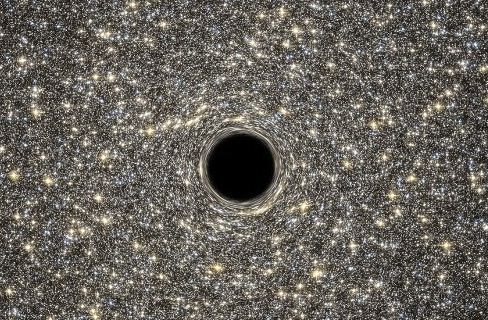The M60-UCD1, discovered by NASA’s Hubble Space Telescope in 2013, is one of the smallest known galaxies. But now the space agency has discovered that the dwarf galaxy is harboring a “monster” black hole.
The diameter of M60-UCD1 is about 300 light years – just 1/500th of our galaxy’s width. However, it is packed with 140 million stars, which also makes it one of the densest galaxies.
Black holes are gravitationally collapsed, ultra-compact objects with a gravitational pull so strong that even light cannot escape. Supermassive black holes – those with the mass of at least one million stars like our sun – are thought to be at the centres of many galaxies.
By combining data from Nasa’s Hubble Space Telescope and the Gemini North telescope, researchers at the University of Utah calculated the mass of the black hole and compared it to its surroundings.
The sharp Hubble images provided information about the galaxy’s diameter and stellar density, while Gemini measured the affect of the black hole’s pull on the stars. The results are published in the journal Nature.
But how did such a massive black hole come to sit in such a tiny galaxy? The most likely explanation is that M60-UCD1 was once a large galaxy containing 10 billion stars, but when it passed very close to the centre of an even larger galaxy, M60, all the stars and dark matter in the outer part of the galaxy were torn away and became part of M60.
“We don’t know of any other way you could make a black hole so big in an object this small,” said Anil Seth, lead author of the study.
Both M60-UCD1 and M60 have their own black holes, and M60’s is so enormous it weighs more than 1,000 times the black hole in our galaxy. It is thought that eventually the two galaxies will come together and their black holes will merge to create an even bigger one.
But that won’t be for quite a while – M60-UCD1 and M60 are currently 50 million light-years apart.
Agencies/Canadajournal

 Canada Journal – News of the World Articles and videos to bring you the biggest Canadian news stories from across the country every day
Canada Journal – News of the World Articles and videos to bring you the biggest Canadian news stories from across the country every day

